| 1 | Brazil’s longest pitviper |
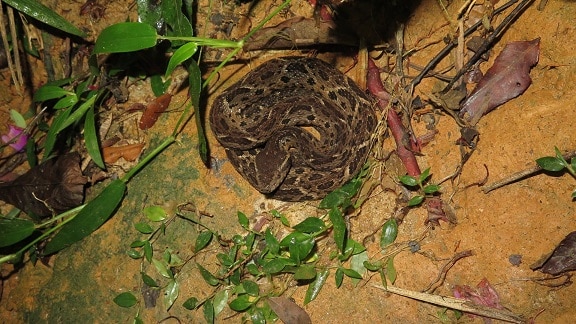
The jararacussu is a venomous snake measuring 1.5 metres, which ranks among the most feared in central and southern Brazil. They’re mainly found in dark forests along the Atlantic coast, and are particularly common in nature parks surrounding Rio de Janeiro. Jararacussus aren’t an Amazon rainforest species, but are far deadlier than many snakes which are. They hold several records within their family, none of them good.
Firstly, jararacussus are the longest Bothrops pitviper in Brazil (out of 30 in total), reaching a record of 2.2 metres. They lay the highest number of young, at up to 73 neonates per batch. They also have the highest venom yield, at an average of 300mg and occasional records of over 1000mg per bite.
According to one estimate, the jararacussu’s venom is 6 times deadlier than their cousin, the jararaca. One study analysed 29 bites in a Sao Paulo hospital, over a 20 year period. 3 of these resulted in death, even with intensive care management and a large dose of antivenom. These deaths took place at 18.75, 27.75 and 83 hours post bite. The earliest symptoms of a jararacussu bite include extreme pain, swelling, bruising, and (slightly less commonly) blistering.
| 2 | Ruthlessly targets the kidneys |
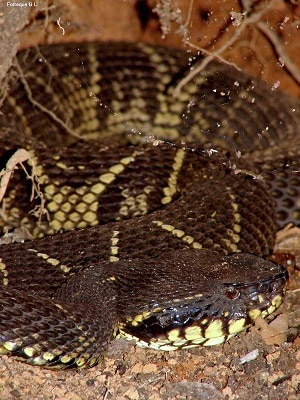
The jararacussu is like an upgraded, next generation model of the jararaca which lives nearby – more venom, vivider patterns, a fancier name. While they’re slightly weaker for spontaneous bleeding, they have a powerful dose of myotoxins, or muscle-targeting toxins. Under a microscope, bite victims often have visible necrosis of individual muscle fibres at a minute level. Jararacussu bites are exceptionally painful, beyond what you’d expect from razor sharp puncture marks, mainly due to gargantuan quantities of venom circulating below the skin. The bite mark bleeds profusely, and a victim’s heartrate can reach 140BPM.
Most dangerously, jararacussu venom is exceptionally hard on the kidneys, and renal failure is a common cause of death. They also target other organs. One victim was a healthy 36 year old woman who was bitten on the ankle in a coastal town near São Paulo. She died just 45 minutes later, from respiratory and cardiac arrest. Closer analysis revealed the precise cause of death to be pulmonary haemorrhaging.
The most disturbing thing is that antivenom is surprisingly ineffective, according to this study: “Effects of polyspecific Bothrops antivenom were not impressive“. This is despite the fact that antibodies produced from Bothrops jararacussu make up 12.5% of Brazil’s standard mixture.
Jararacussus can even come back to haunt you decades down the line. One 48 year old man had his leg amputated from the mid-thigh, as the site of a jararacussu bite from 20 years ago suddenly developed a malignant tumour.
| 3 | Prefers dark, tangled forests |
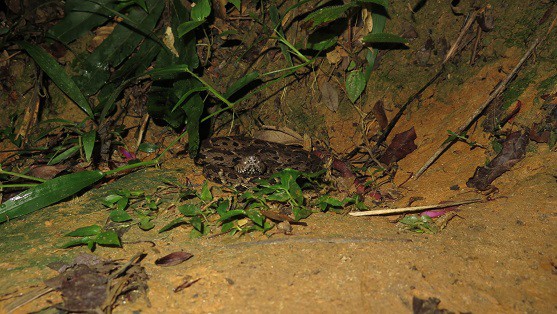
Bothrops bilineatus occupies the Amazon rainforest, while crossed pitvipers occupy open grasslands. The jararacussu is different again, as it’s a species of dark, tangled forests. They inhabit not rainforests, but the semi-deciduous forests of Brazil’s Atlantic coast, which are fuelled by a constant supply of weather fronts spilling in from the ocean.
Jararacussus are rarely found in open areas. They prefer the tangled forest depths, slithering through dense undergrowth in areas where little sunlight ever breaks through. They’re occasionally found in the clearings of abandoned banana plantations, but rarely lurk in the rows of active crop fields, waiting to attack oblivious workers.
Bothrops jararacussu rarely climbs trees, and they rarely enter animal burrows. There’s enough tangled vegetation in their forests that there’s no need to hide below. As long as it’s a thick forest with little sunlight, jararacussus can be found in many locations: along the edges of small streams, flatter areas with moss, twisting mazes of roots below trees. Jararacussus mainly encounter humans after straying to forest outskirts, or crossing paths within forests.
| 4 | How one bite unfolded |
One bite happened to a 35 year old farm labourer, who was struck twice on the forearm by a jararacussu measuring 1.1 metres. This happened in Sao Paulo State in December 1993, and the man only reached hospital 9 hours later. By this time, massive swelling had spread all the way to his shoulder, his heartbeat had reached 122BPM, and he was involuntarily breathing rapidly, at 25-32 breaths per minute. He was immediately administered 8 vials of Brazil’s main pitviper antivenom, followed by another 4 vials later in the day. The man also suffered from drowsiness and a low grade fever, but his blood pressure was normal.
Over the next 30 days, the man’s kidneys continued to fail. Doctors performed an open biopsy and discovered necrotic tissue within the kidneys. The man survived, but was forced to depend on a neverending haemodialysis regime.
Other victims have died from intracranial haemorrhage, where the lining of blood vessels in the brain breaks down, but kidney failure is easily the most common cause of death. One study found that the most savage symptoms only kick in with jararacussus over 50cm. Those under 50cm caused no necrosis, kidney damage, and very few blisters, but specialised in unclottable bleeding from the bite wound.
| 5 | ID signs |
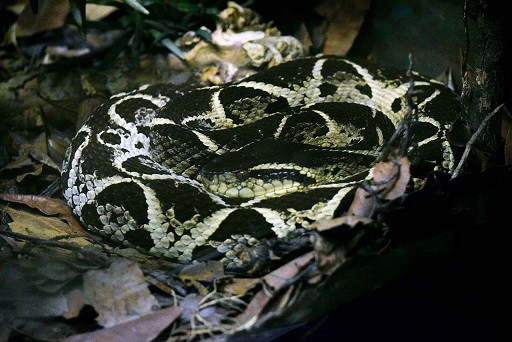
Jararacussus have a vertical pupil, and a greyish iris with complex forest shades. They can be an easy snake to recognise, but jararacussus have a large variety in appearance. The blandest ones are beige-brown, and hard to distinguish from their lancehead cousins, such as Bothrops moojeni. But about 50% are much easier, as these jararacussus have more vividly contrasting patterns. These can be bright yellow set against midnight black, or ghostly white set strongly against black, as in the image above.
A jararacussu’s head has the same colours as its body – no random green suddenly appearing. Their face is white/yellow, while black covers most of their skull cap.
Jararacussus are heavily nocturnal, and this makes spotting them an epic task while trudging through forests. For most villages along Brazil’s Atlantic coast, it’s smarter not to enter forests in the first place. An afternoon adventure in the woods is a simple proposition in Britain or New Jersey. In Brazil, it’s fraught with risks and calculations, even if it’s a deciduous forest rather than a rainforest.
| 6 | Females are twice as long |
The Bothrops pitviper family has 30 members in Brazil (48 members worldwide), and the jararacussu is proudly the longest member of all, with a record of 2.2 metres. The longest fer-de-lances (Bothrops asper) reach 2.5 metres, but these inhabit Central America, and fail to reach Brazil’s northern borders. Jararacussus are thick-bodied as well, as they’re primarily ground-dwelling, and never need to skirt along fragile tree branches. Newborns average at 26cm.
One unique feature of jararacussus is their colossal gender size disparity. Females are can be twice as large, pushing past 2 metres, while males are regularly just 70cm to 1 metre.
The secret seems to lie in reproduction. Jararacussus produce the most offspring of any lancehead, averaging at 13-40, but occasionally up to 73. Larger females produce more babies (AKA neonates), and somewhere in history, female jararacussus seem to have fallen into a self-perpetuating spiral where producing more offspring had a survival advantage, and evolution compelled them to grow larger and larger. It’s also possible that their Atlantic forests were home to higher numbers of snake-hungry birds.
| 7 | A secret COVID cure? |
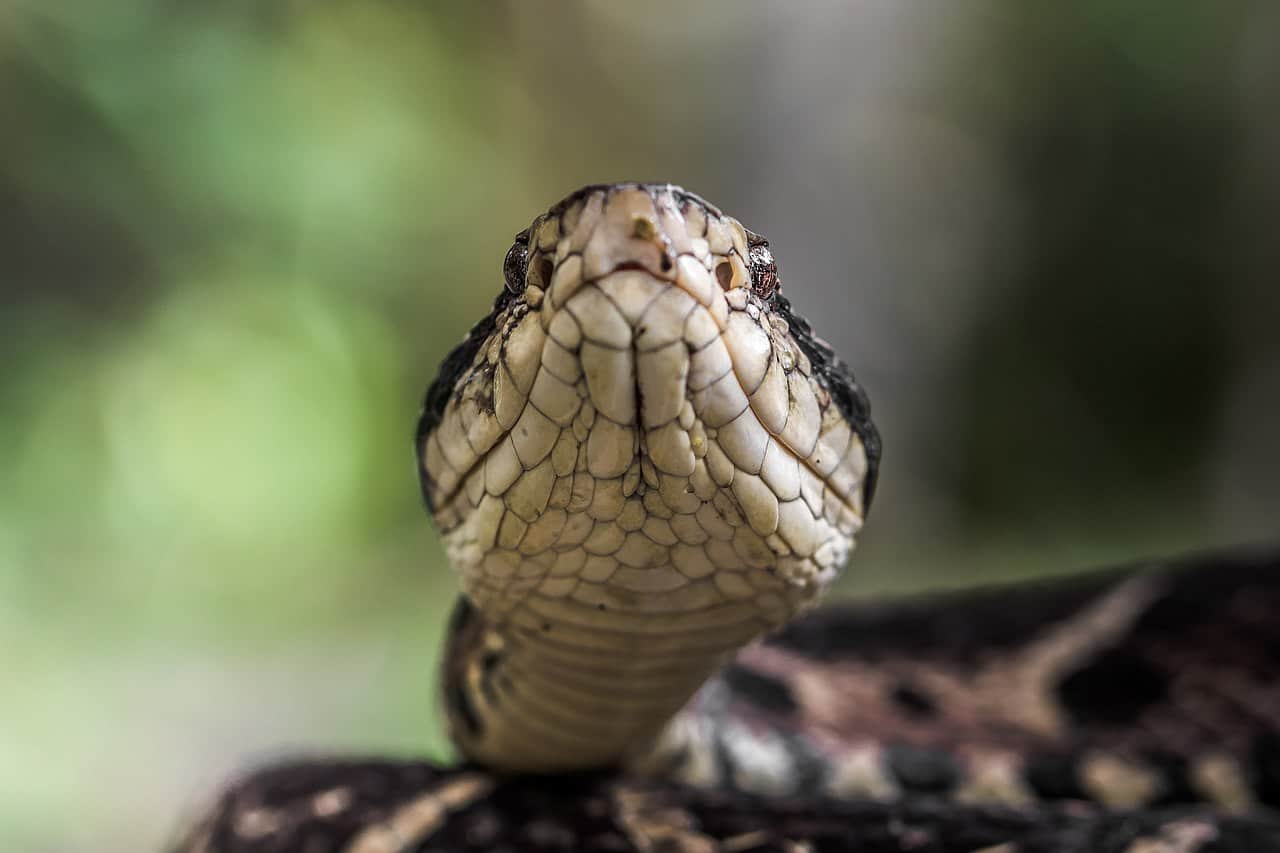
Most Westerners first learnt of the jararacussu in 2021, when its name appeared in connection with a COVID-19 cure. The study isolated a single harmless peptide from within the toxic mixture. The jararacussu’s venom has dozens of toxins, and this was a single peptide from within a single toxin, namely Bothropstoxin-I (BthTX-I), the myotoxin responsible for muscle necrosis.
When given to monkeys suffering from SARS-CoV-2, the peptide reduced the virus’ ability to multiply by 75%. It connected to a specific enzyme within the virus called PLPro, which is responsible for replication. Most importantly, the toxin didn’t damage healthy cells in the monkeys. There was no need to drive to Brazil and bag up a snake with steel tongs, as the peptide was simple to replicate in a laboratory.
People joyfully dreamt up schemes to infuse the entire population with jararacussu venom, before realising that it was probably a bad idea. The scientists’ next goal was to test the peptide on humans.
| 8 | Rare colour morphs |
Another rare discovery in the wild was a freakishly yellow jararacussu. Albinism is where the tyrosinase enzyme that manufactures melanin is totally disabled. Xanthism is a yellow equivalent, where the genes behind the yellow xanthophore pigments go overboard and overpower everything else.
This is extremely rare in snakes (rarer than albinism), but was discovered in a sulphur yellow jararacussu in April 2016, from Minas Gerasis state, Brazil. Not a single scale had black pigment – the patterns were a richer yellow than usual, while the black areas were now a pale sandy brown.
The snake measured 95cm, so it had evidently managed to survive for several years, despite having inferior camouflage at night. Albino jararacussus have also been discovered in Espírito Santo, Brazil. These were three newborns which were a ghostly white, with the typical red eyes of albinos. Their facial expressions were as determined and cunning as ever.
| 9 | The seaweed solution |
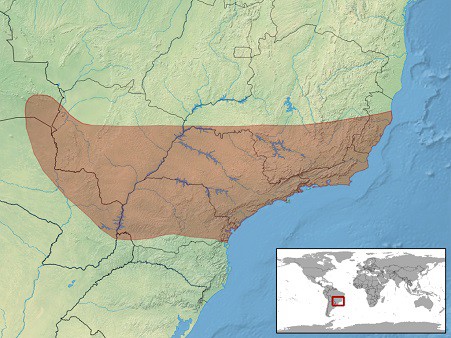
If you’ve just pulled a jararacussu’s fangs out of your ankle, and you can already feel the pulsating venom spreading millimetre by millimetre, then there’s a natural cure in addition to antivenom: seaweed. Scientists gathered green alga seaweed and created a dense extract using 4 methods. Mice were injected with jararacussu toxins, and then tested with each extract.
Methanol extraction was the least effective, but the other 3 methods “fully protected mice from B. jararacussu-induced haemorrhage and delayed death of mice“. All 4 seaweed extracts reduced the usual swelling, by an average of 20%. The seaweed prevented haemorrhaging when administered both before and after the jararacussu venom – it was a shield and a cure. It was concluded that the slimy seaweed could add power to conventional jararacussu antivenom.
There was one small problem: the seaweed was picked in Antarctica, rather than directly from the coast of Rio de Janeiro. But it shows how hidden cures are lurking in all sorts of weird places.
| 10 | Huge, but likely to flee |
One study compared five members of the lancehead family: Bothrops moojeni, crossed pitvipers, jararaca, Bothrops pauloensis and jararacussus. While all struck at feet or leather boots when agitated, the jararacussu was the most likely to flee instead.
Jararacussus will even play dead on occasion, flipping onto their pale bellies and going completely limp, although this isn’t as common as with Indian wolf snakes. They have several other tricks in their repertoire: thrashing wildly, vibrating the tail, hiding the head, or elongating their body sideways to create an illusion of great size.
The jararacussu is mostly a mammal eater, not exclusively like the crossed pitviper, but deriving 70.1% of its meals from mammals, according to a study including 67 jararacussus in total. A minimum of 58% mammals was another estimate. As youths, they’re more dependent on frogs, which gradually fall as they break through the 50cm barrier. Pygmy rice rats are one of their top prey, and squirrels have also been observed, including Ingram’s squirrel (Sciurus ingrami). Jararacussus occasionally eat other snakes, such as dotted brown snakes (Sordellina punctata).
